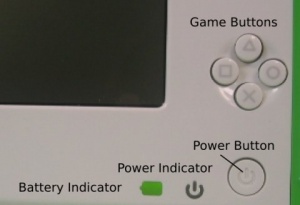Clean-install procedure for 8.2: Difference between revisions
(update slightly old references to versions, review while helping someone in equador) |
No edit summary |
||
| (10 intermediate revisions by 5 users not shown) | |||
| Line 1: | Line 1: | ||
{{Deprecated|<center>Release 8.2 is obsolete, please see the installation section of the release notes in the [[release|latest stable release]].</center>}} |
|||
This page provides parallel instructions for installing both signed builds (official or candidate releases) and unsigned development builds for [[Friends in Testing]]. |
This page provides parallel instructions for installing both signed builds (official or candidate releases) and unsigned development builds for [[Friends in Testing]]. |
||
| Line 6: | Line 7: | ||
<!-- Section copied from [[olpc-update]], keep the two pages in sync --> |
<!-- Section copied from [[olpc-update]], keep the two pages in sync --> |
||
You need to identify the "build" to which you want to update your system. |
You need to identify the "build" to which you want to update your system. |
||
The latest stable system software release is |
|||
: {{Latest_Releases/stable}} |
|||
Most users should update to that build. |
|||
* This page describes how to update to the 8.2 release from 2009. |
|||
| ⚫ | |||
* To install the latest release, see [[Release notes|the latest release notes]]. You may need to first [[Upgrading_firmware|upgrade your firmware]]. |
|||
| ⚫ | |||
All releases currently available are listed on the [[Release notes]] page. |
|||
Before upgrading to any release, read its [[release notes]] carefully. |
|||
===Other builds=== |
|||
There are later builds in various stages of development, see [[OS images]] for more background. |
|||
These are likely to be unstable and you will probably need to request a [[developer key]] to install them. |
|||
== Official releases and candidate builds == |
== Official releases and candidate builds == |
||
| Line 29: | Line 24: | ||
# Perform a clean (Full, not Quick!) format of the USB storage device. |
# Perform a clean (Full, not Quick!) format of the USB storage device. |
||
# Download the OS image named <tt>''someversion''.img</tt> (e.g. <tt>gg-802-1.img</tt>) and the signature file <tt>fs.zip</tt> to the USB storage device. These are compressed files, but DO NOT open them — in your browser click the right mouse button over the link and choose "Save Link/Target As...". |
# Download the OS image named <tt>''someversion''.img</tt> (e.g. <tt>gg-802-1.img</tt>) and the signature file <tt>fs.zip</tt> to the USB storage device. These are compressed files, but DO NOT open them — in your browser click the right mouse button over the link and choose "Save Link/Target As...". |
||
#* For release 8.2.1 with activities included, use gg-802-1.img and fs.zip from |
#* For release 8.2.1 with activities included, use gg-802-1.img and fs.zip from<br>http://download.laptop.org/xo-1/custom/g1g1/gg-802-1/ |
||
#* For release 8.2.0 with activities included, use gg-767-4.img and fs.zip from |
#* For release 8.2.0 with activities included, use gg-767-4.img and fs.zip from<br>http://download.laptop.org/xo-1/custom/g1g1/gg-767-4/ |
||
#* For other releases without activities included, see subdirectories of |
#* For other releases without activities included, see subdirectories of<br>http://download.laptop.org/xo-1/os/official/ |
||
# Your USB storage device should now contain two files (in the root) named something like: <tt>gg-802-1.img</tt> and <tt>fs.zip</tt>. |
# Your USB storage device should now contain two files (in the root) named something like: <tt>gg-802-1.img</tt> and <tt>fs.zip</tt>. |
||
# Unmount the USB storage device and disconnect it from your computer when it is safe to do so. |
# Unmount the USB storage device and disconnect it from your computer when it is safe to do so. |
||
Latest revision as of 01:52, 8 December 2011
This page provides parallel instructions for installing both signed builds (official or candidate releases) and unsigned development builds for Friends in Testing. Note that a clean install will reflash your XO; everything you created will be deleted. See olpc-update for an update mechanism that preserves some data. What version is available?You need to identify the "build" to which you want to update your system.
For G1G1 users, the 8.2.0 release notes offer the most concise instructions for restoring the factory configuration.
Official releases and candidate builds For the general public
 for new users illustrated guide to updating using a USB stick You'll need a USB storage device such as a flash drive, with a capacity of 500 MB or higher. It should be formatted as FAT or FAT32, and only contain one partition. Most ordinary USB flash drives are set up this way, except "U3" flash drives which may not work. Remove U3 with uninstall software from http://www.u3.com/uninstall or http://u3uninstall.s3.amazonaws.com/U3Uninstall.exe
Development builds For Developers
probe-usb copy-nand disk:\osNNN.img where osNNN.img is the file you downloaded (e.g. os2230.img, or en708-1.img).
bye Note: This procedure can be used for builds signed with the OLPC key. If it is used for builds signed with other keys, it is necessary to disable security otherwise the developer key will need to be in the USB for every boot. |

